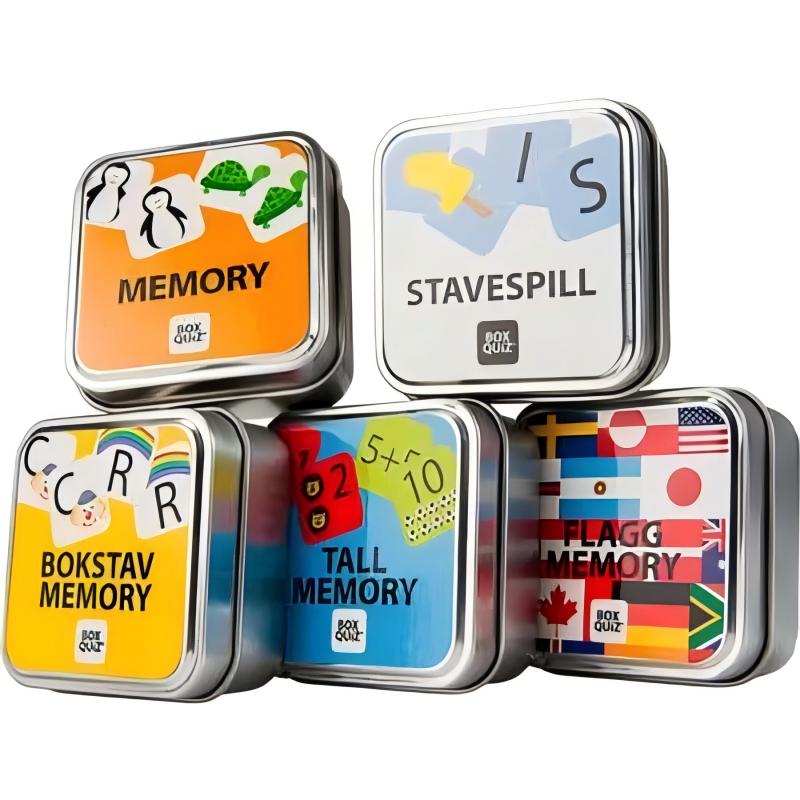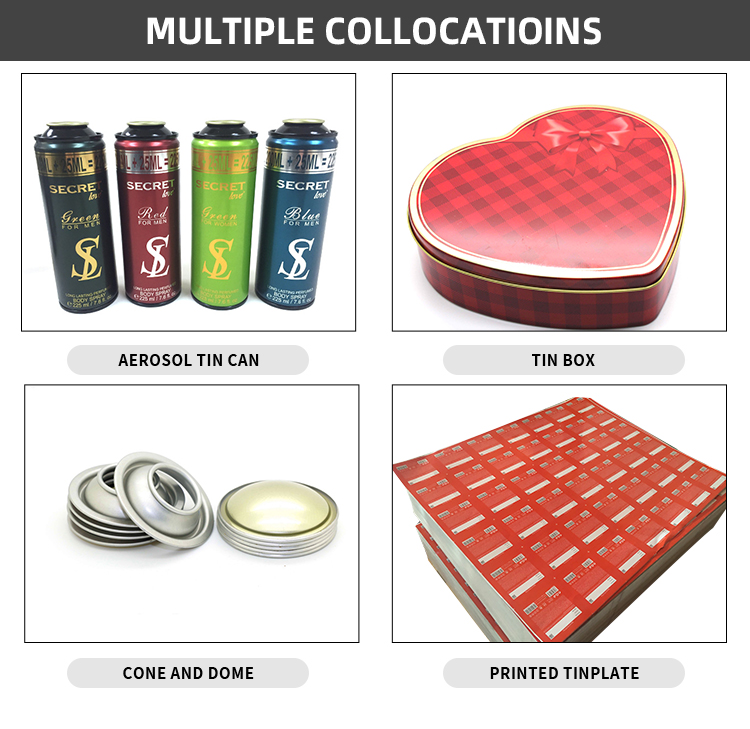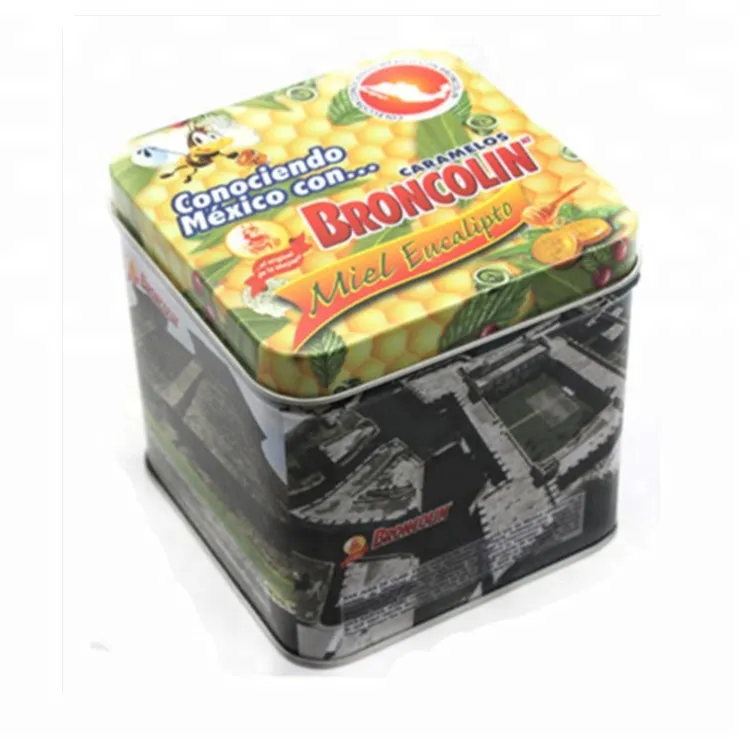In the food industry, packaging is not only an important part of the product appearance, but also a key factor in protecting food quality and extending shelf life. With the continuous improvement of food safety awareness, consumers have put forward higher requirements for the safety of packaging materials. Tinplate cans, as a common food packaging material, are widely used in the packaging of foods such as biscuits, candies, and milk powder. However, whether tin plate cans meet food safety standards and whether they can effectively protect the safety of food have become the focus of attention.
This article will conduct an in-depth analysis of the material composition, manufacturing process, and food contact safety of tinplate cans to explore their compliance with food safety standards.

What are the material compositions of tinplate cans? Does it meet food safety standards?
Tinplate cans are a packaging material that is tin-plated on a low-carbon steel substrate, and its material composition directly affects the safety of food. To evaluate whether tin plate cans meet food safety standards, you first need to understand its basic material composition and the safety of each component.
Substrate: Low-carbon steel
The main material of tin plate cans is low-carbon steel, a metal with good strength and plasticity. Mild steel itself does not come into direct contact with food, but as the skeleton of the tinplate can, it provides sufficient hardness and stability to ensure that the packaging can withstand external pressure and impact during transportation and storage.
Plating: Tin
On the surface of mild steel, tinplate is coated with a protective layer by electrolysis or hot-dip tinning. As a relatively inert metal, tin has good corrosion resistance and antioxidant properties. The main function of the tin coating is to prevent oxidation of the iron substrate and avoid direct contact between iron and food. Tin is chemically stable and does not easily react with ingredients in food, which makes it very safe in food packaging. Internationally, for tinplate cans used for food packaging, the thickness of the tin layer is strictly controlled to ensure that it has sufficient protection without affecting the safety of food.
Coating: Internal protective coating
Although the surface of the tinplate can is tinned, in order to further enhance its protection of food, especially when packaging acidic or alkaline foods, the inner surface of the tinplate can is usually coated with a special organic coating. The function of these coatings is to avoid direct contact between food and metal and prevent corrosion, odor or metal dissolution. The coating material is generally epoxy resin, polyester resin or other food-grade coatings. These materials must undergo strict food contact safety assessments to ensure that no substances harmful to the human body are released.

What are food safety standards?
Food safety standards are laws, regulations and technical standards formulated by countries to ensure the safety of food in various links such as production, processing, packaging, transportation, storage and sales. In the field of food packaging, tin plate cans are packaging materials that are in direct contact with food, and their safety must comply with relevant food contact material standards.
International food contact material standards
Internationally, the safety of food contact materials mainly refers to two major standard systems: the EU Food Contact Materials Regulation and the US Food and Drug Administration (FDA) Food Contact Substances Regulation.
● EU Food Contact Materials Regulation (EU Regulation No. 1935/2004): This regulation stipulates the basic requirements for food contact materials. All food contact materials must not migrate harmful substances into food under normal use conditions, and the migrated substances should not pose any risks to human health.
● FDA food contact material regulations: The US FDA has specified a list of substances allowed to be used in food contact materials. Any material used for food packaging must pass strict toxicological evaluation and safety testing to ensure that it will not have a negative impact on food safety.
China Food Contact Material Standards
China has a complete set of standards for food contact materials, mainly based on the national food safety standards (GB standards). The relevant standards for tinplate can packaging are:
● GB 4806.1-2016 "National Food Safety Standard General Safety Requirements for Food Contact Materials and Products": This standard stipulates the basic requirements for all food contact materials, including no contamination of food, no impact on food flavor, and no migration exceeding the safety limit.
● GB 4806.10-2016 "National Food Safety Standard Metal Materials and Products": This standard specifically stipulates the safety requirements for metal materials when they come into contact with food, including the limit of metal dissolution and the safety requirements of coating materials.

How to evaluate the food safety of tinplate cans?
According to the above standard system, tinplate cans as food packaging materials must undergo strict food safety evaluation. The specific evaluation contents include the following aspects:
Metal dissolution test
For metal packaging materials, migration test is an important part of food safety assessment. The test content mainly evaluates whether metal ions will dissolve into food in a specific food environment, especially the dissolution of heavy metals such as lead, chromium, nickel, etc. that are potentially harmful to the human body. According to international and Chinese food safety standards, there are strict limit requirements for the metal dissolution of tinplate cans in acidic, alkaline, and oily foods.
The laboratory simulates the food contact environment to detect the migration of tin, iron and other metal elements in food. According to the test results, if the migration amount is within the prescribed safety limit, the tinplate can is considered to meet the food safety standards.
Coating safety test
Since the inner layer of tinplate cans is usually covered with coating materials, these coatings must be tested for safety. The test content includes whether the coating releases harmful substances when in contact with food, especially the migration of chemical substances such as monomers and plasticizers in the coating. The standard also has clear provisions on the migration of coatings, and any migration exceeding the limit will be considered unqualified.
The choice of coating material is crucial. Epoxy resin coating is a common choice, but the bisphenol A (BPA) in its composition can migrate into food in some cases, causing health concerns. Therefore, many tinplate can manufacturers are now using BPA alternative materials to reduce food safety risks.
Odor and taste testing
Packaging materials should not change the taste or smell of food. The coating and metal materials of tin plate cans may react slightly with certain ingredients in food, resulting in changes in food flavor. For this reason, food safety standards also clearly stipulate that packaging materials must not affect the sensory properties of food. Through odor and taste testing, it is possible to evaluate whether tin plate cans will affect the flavor of food during long-term storage to ensure that they meet the sensory safety requirements of food packaging.

Why does the manufacturing process of tinplate cans determine food safety?
In addition to the safety of the material itself, the manufacturing process of tinplate cans also has an important impact on food safety. Every link in the manufacturing process may affect the safety of the final product.
Stamping and welding process
The forming of tinplate cans is usually completed by stamping, stretching or welding. During the stamping or welding process, if the operation is not done properly, metal debris or welding residue may be generated. These foreign objects may remain inside the can body during the subsequent packaging process, causing food contamination. Therefore, the production requirements of food-grade tinplate cans must meet strict process standards and pass multiple cleaning and testing processes to ensure that the inside of the can body is clean and free of foreign objects.
Coating process
The coating process is a key link in the production of tin plate cans. Whether it is the inner coating or the outer coating, it must be ensured to be uniform, complete and crack-free. If there are any defects in the coating, the metal may be directly exposed, increasing the risk of food contamination. Therefore, the coating process must be carried out in a dust-free environment and undergo strict quality control and testing to ensure that it fully meets food safety requirements.
Can body sealing
In actual use, the sealing of tin plate cans directly affects its food safety performance. If the can body is not tightly sealed, outside air, moisture or microorganisms may penetrate into the can, causing food deterioration. Therefore, in the manufacture of tin plate cans, the sealing process is also regarded as a key link, and air tightness testing is required to ensure the tightness and stability of the seal.

